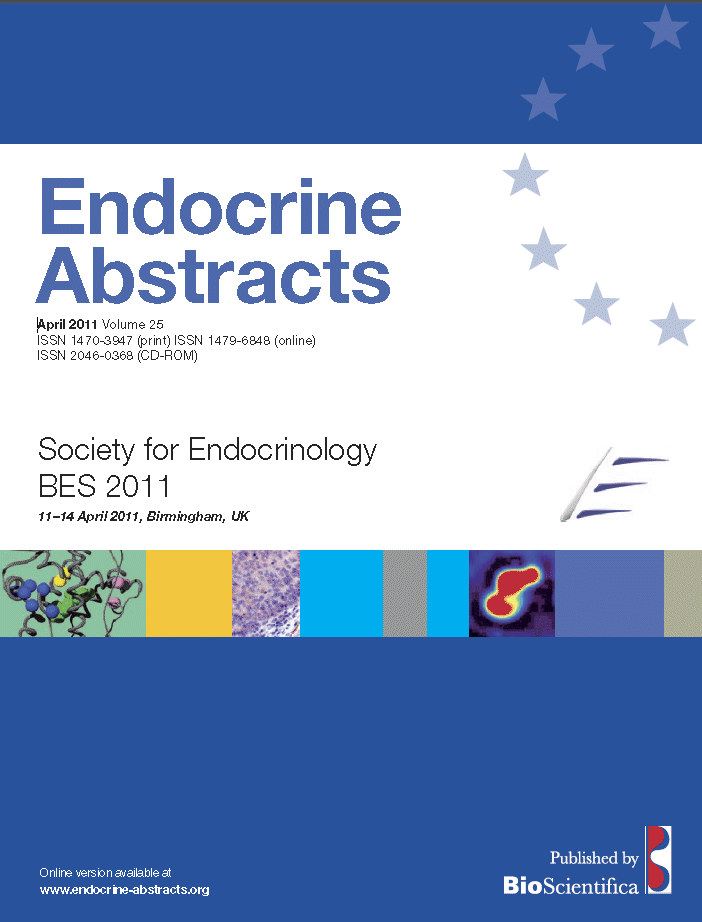Searchable abstracts of presentations at key conferences in endocrinology
ea0025mte1 | (1) | SFEBES2011
Abnormal growth and puberty presenting in late adolescence
Young people in their late teenage years may present to either paediatric or adult endocrine clinics with abnormal growth (usually as short stature and/or recognition of slowing growth) and delayed or absent puberty. Anxieties about growth potential may be very significant, and the lack of puberty may blight social interactions and markedly reduce self-esteem.Although constitutional delay in growth and puberty is the most common diagnosis for this type o...
ea0025mte2 | (1) | SFEBES2011
Pitfalls in diagnosis and treatment of Cushing's syndrome
Many difficulties can be encountered in the management of patients with Cushings syndrome or suspected Cushings syndrome.In the first step of the diagnosis strategy, establishing the state of chronic hypercortisolism may be hampered by a number of pitfalls: drug interaction (inducers of high CBG levels, liver enzyme inducers, glucocorticoids, antiglucocorticoid RU 486, Glycyrrhetinic acid); intercurrent pathologic states (obesity, thyroid dys...
ea0025mte4 | (1) | SFEBES2011
Managing Turner Syndrome through childhood and adolescence
Turner syndrome (TS), defined as loss or abnormality of the second X chromosome in a phenotypic female, affects 1 in every 2500 live female births. Around 155 females will be born with TS in the UK each year, with ~2800 girls ≤18 years and ~6500 women aged 1860 years living with the condition. Short stature is a constant feature with gonadal dysgenesis present in ~90%, Associated features include dysmorphic features which are often mild, lymphoedema, otitis media w...
ea0025mte5 | (1) | SFEBES2011
Late effects of cancer therapy
One in eight hundred young adults is now a survivor of childhood cancer as a result of tremendous advances in cancer therapy. However, this success now brings with it the challenge that both the cancer and its therapy may have late effects. In a recent review of 10 397 young adult survivors, 62.3% had at least one chronic condition; 27.5% had a severe or life-threatening condition (grade 3 or 4). The adjusted relative risk of a chronic condition in a survivor, as compared with...
ea0025mte6 | (1) | SFEBES2011
Assessing fracture risk and response to therapy in osteoporosis
Osteoporosis is a skeletal disorder characterized by compromised bone strength predisposing to an increased risk of fracture. An individual with a hip or vertebral fracture has an excess risk of death that is highest during the first year. Moreover, all osteoporosis related fractures can lead to significant long-term disability and decreased quality of life. The ability to accurately gauge fracture risk is critical in identifying cost-effective thresholds for intervention....
ea0025mte8 | (1) | SFEBES2011
Applications of next generation sequencing: what can a key academic service provider offer?
Providing access to cutting edge technology and expertise in data analysis, the Genomic Services group at the WTCHG are empowering users to drive the pace of research into the underlying mechanisms of disease.The decade since the publication of the first full human genome has seen the development of sequencing technologies, fuelled by competitive pressure and the challenge of the $1000 genome. The latest High Throughput Sequencing platforms from LifeTech...
ea0025mte9 | (1) | SFEBES2011
microRNAs – key contributors to endocrinology
MicroRNAs (miRNAs) are a family of endogenous small noncoding RNA molecules, of 1928 nucleotides in length. In humans, up to 3% of all genes are estimated to encode these evolutionarily conserved sequences. miRNAs are thought to control expression of thousands of target mRNAs. Mammalian miRNAs generally negatively regulate gene expression by repressing translation, possibly through effects on mRNA stability and compartmentalisation, and/or the translation process itself....




